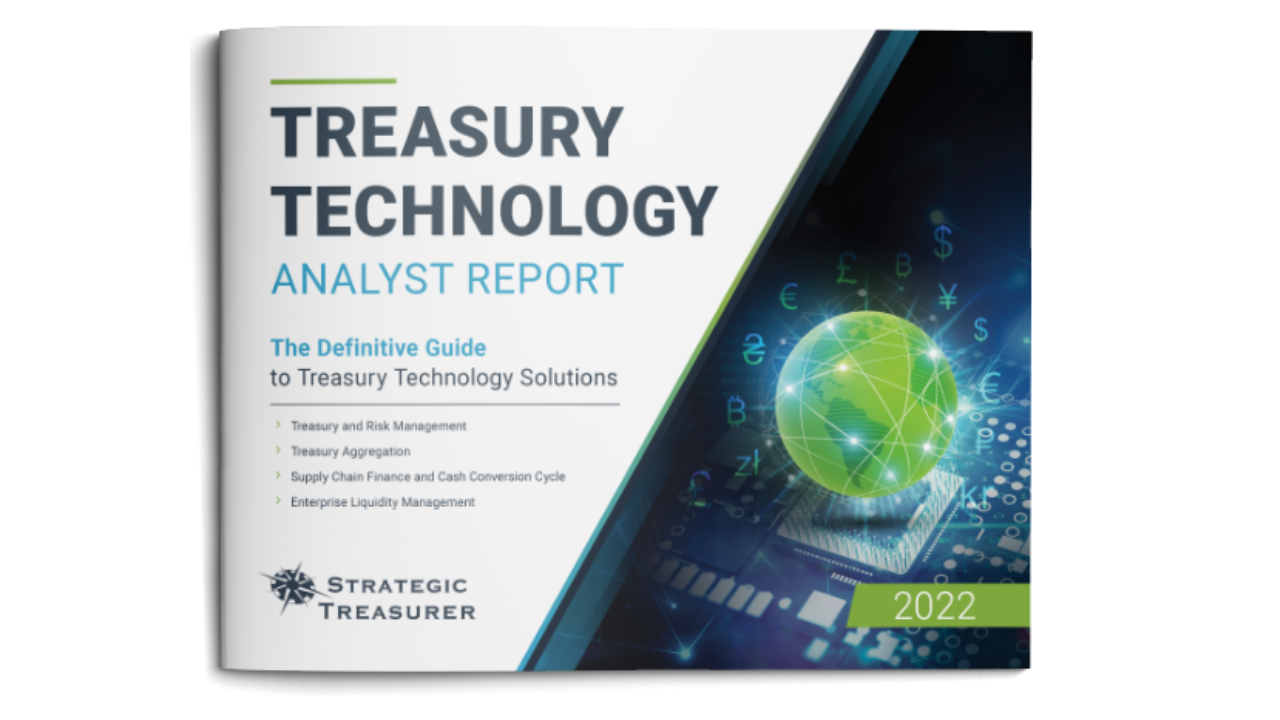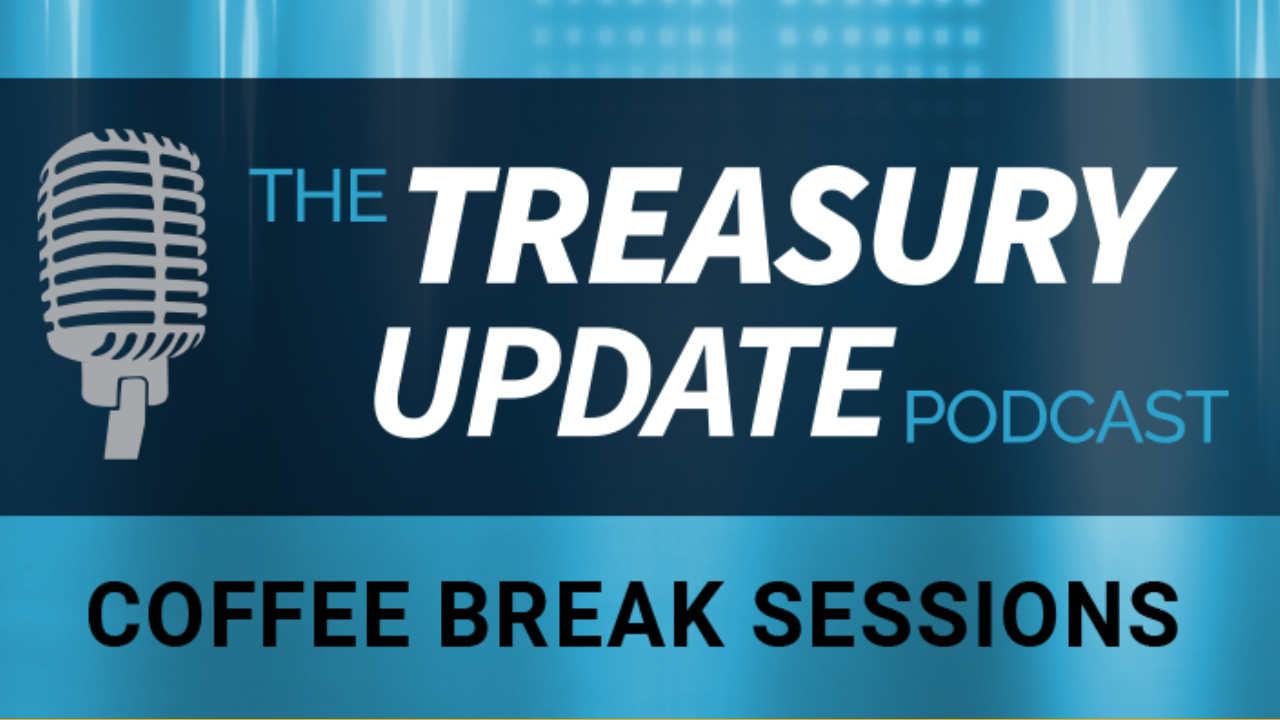
Session 80
Coffee Break Session:
What Is the Debt Market?
Host:
Jason Campbell, Strategic Treasurer


Speaker:
Paul Galloway, Strategic Treasurer


Episode Transcription - (Coffee Break Session Series) - Episode 80 - What Is the Debt Market?
Jason Campbell 00:03
Welcome to the Treasury Update Podcast, Coffee Break sessions presented by Strategic Treasurer covering foundational topics and core treasury issues. And about the same amount of time it takes you to drink your cup of coffee. I’ll be your host Jason Campbell, business development leader as Strategic Treasurer. Welcome to another episode of the Coffee Break Sessions, chatting with me today is Paul Galloway, Senior Advisor at Strategic Treasurer. Paul, always a pleasure to have you on. Thank you for joining us today.
Paul Galloway 00:31
Thanks for having me back. Again. Always a pleasure.
Jason Campbell 00:34
Absolutely. You know, the cool thing is we’ve had some great conversations, I think in these past, I don’t know, probably five, six episodes that we’ve had around debt and capital and you know, some some good takeaways, some good key nuggets around those particular subjects and really kind of dive in into some specifics. So one of the things that you and I actually kind of discussed is is like, you know, what will be a good one to kind of finalize this, this part of that capital series, but really kind of to top it off. And I think that we couldn’t close it out with any other better subject than to talk about debt market. I think it’s it’s an interesting piece, I’d love to get your insight and definitely educating myself as well as the audience around this particular topic. So let’s jump right in to going into what is the debt market?
Paul Galloway 01:20
That’s a great question. We spent some time here recently talking about the equity market and what it means to issue common stock, what are publicly traded stocks like, how they behave, why do you issue them? Well, we’re flipping here to the debt side now. So in thinking about debt market, just like equity issuance, you have, or common stock, you have both sides, you have both players, people, you know, or entities that issue common stock and investors that buy common stock as an investment, it’s the same thing in the debt market. So you’ll have debt market, you have equity market, the debt side of things works just a little bit differently than common stock, typically, what happens when an organization wants to raise capital via debt instruments, they will go to their banking partners to work out the parameters for issuing debt. And so those banking partners have relationships with institutional investors. And so I specifically call out institutional investors, because you and I can go out and just buy issuance of senior debt from an organization. So let’s just say, you know, Amazon was, you know, doing an initial issuance of senior debt, you and I wouldn’t be able to go by that doesn’t mean that we can’t own it in our 401 K plans, or IRAs, there’s a chance that we do own those bonds in our portfolios from the secondary market, meaning that the bond funds that we invest in those portfolio managers have bought those bonds in the secondary market, if not at issuance in some cases, and it’s part of the portfolio. So we can’t go out and just get like common stock. So common stock on the day of issue, and you can go out and buy it on the day of issuance for senior debt instrument, you can’t go out right away and buy it into your personal portfolio. That’s not something you can do, like right away. So what happens is, is that the issuer will work with the banks and the banks and the senior managers, key senior managers, typically, the CEO and CFO will go travel around to meet with key institutional investors, and what’s called a roadshow, to pitch the issuance to talk to them about their company, and why it’s important to raise a capital N and whether ask them, you know, why, why are you using it? And there’s various things that they can tell them. Sometimes debt issuance can be for specific things, and then sometimes they can just say, simply say, Well, we’re going to use it for general corporate purposes.
Jason Campbell 04:14
As you’re talking about this, you know, first thing I think about when think about get, right, that’s been it’s a negative thing, you know, that’s bad, right. And, and then situations when we think about you know, raising capital and investing and things of that nature, you know, it has some silver lining to it. And you mentioned that, you know, Uri cannot go out and purchase these dead equities from from these firms here. So, who are the players in this market?
Paul Galloway 04:37
Typically, the players are, you know, like I said earlier, institutional investors and so these will be a parameter of people or groups of legal entities that are out there. So these could be other corporations that are interested in in the bonds. It could be registered investment advisors. It serves as part of their portfolio, they want to buy the bond. And so there’ll be part of the offering. When you go out and you do the road shows, you get a sense of who’s really interested in making an investment in the bonds or buying the bonds. And typically, what you end up having happen is that they get what’s called oversubscribed and you want that why do you want that you want that because if you’re like two three times oversubscribed, that means the demand is really high, what happens is an issuer that can give you more favorable terms in terms of the yield that you pay on the bond, so you could get a better deal. Versus if it was like one to two times in between there. That means that the appetites not quite as good. And so you have to pay a little higher yield to ensure that you get or raise the full amount of the capital that you want raised. Even though the subscription is you know, I say one have two times, that doesn’t mean that all those investors ultimately subscribe to that. It’s one of those things where the institutional players when it comes to bond funds, and these are things that you would see in your 401 k or IRA, those bond fund managers have an interest in getting these bonds. And if they can get them at, you know, issue, it’s the primary market, that they will if they’re really interested in that company in and the issuance is coming out. Otherwise, they may trade those through the secondary market.
Jason Campbell 06:33
So you brought up some good points there, you actually leads into the next question, I do have a you were talking about analyzing and monitoring these markets and what to do. So let’s this question is gonna be kind of twofold. So part one of this question I want to ask you is kind of on the issuer side of things. So how do the issuers monitor debt markets? And why is it important to know what’s really going on?
Paul Galloway 06:54
Yeah, let’s put our treasurer cap. So treasures of companies typically are involved in capital raising. And what’s important for them is to see what’s going on now in the markets. And so what they’ll do is, though, they’ll look at several things, though, look at okay, what are the underlying benchmark rates? What are they doing? So it could be for floating rates used to be LIBOR, that you would look at, but LIBOR has gone away. And so now in the US, we’re looking at primarily SOFR as the one that seems to have risen to the top. That’s a secured overnight funding rate. That’s SOFR. And so that’s a floating rate. And then you have your benchmark rates, like treasuries. So for fixed for fixed coupons, you typically benchmark that off treasury. So that’s important from an issuance standpoint, because when you go to issue anything out there, there’s two components to the rate that you pay on that issuance. One is the underlying benchmark rate, which is fixed or floating, but the other component is spread spread is based on perceived credit risk that’s out in the market. And so you pay the underlying benchmark plus a spread. And that’s what you pay for your rate. That’s what your rate ends up being. And so that spread component, like I talked about, based on credit, what treasures will do is they’ll mark, they’ll go out into the market. And they’ll see how bonds are trading for competitors, especially especially around new issuers that are of similar credit quality. And so that will give them an indication of where they think they should trade plus, they’ll look at their own bonds, and see how their bonds are traded down the market today, ones that they’ve issued before. And this will give you a view of what cash should be what it should look like. And so they’re constantly monitoring that to understand where things are at. So from a planning perspective, looking out, not just the next 12 months, but going out three, four or five years, they’re looking at what potential costs might be. So they go out and they monitor all these different components that I just talked about, to determine what things might look like. And that gets more refined, the closer they get to the point that they start considering, hey, I’d want to raise some capital. And it could be you know, something that’s like a senior type deal, or something that’s maybe contingent in nature or revolver, things that are set up to backstop and fill gaps or emergencies. It’s important for treasures to continue to monitor the debt markets, both for secondary offerings, new offerings in their industry after credit qualities.
Jason Campbell 09:50
So on the flip side of that, so let’s talk about from a from a investor perspective, right. So kind of a similar question. This is part two of that of that first question I asked. You know, how do investors monitor the debt market? And why would it be any different from an issuer’s point of view.
Paul Galloway 10:07
So bonds behave a lot different than stocks. So stock trades, a variety of components, such as revenue earnings, earnings is a huge component to how stocks trade proceed future earnings, dividend yields, products services, it can be things that are qualitative and quantitative that impact common stock with bonds. So this would be debt issuance, or debt, issuances of bond bonds trade based on interest rates, or yields. And so is yields move. And so what a yield is think of it this way, I issue a bond at 5%. And as a par value of 100, meaning assume that price is per unit for the bond is 100. That’s the price of the bond. And I issued it at 5%. What happens out in the markets is, so initially when you issue it, just excluding everything else, just holding all that constant right there, what I told you, the yield on the bond at time of issuance is 5%. Nor in anything else, I’m making this real simple. But what happens is, after you issue it, there’s all kinds of things are going on in the markets, spreads are moving. So spreads that one component talked about earlier, credit risk, that moves all the time moves every day moves during the day. So spreads are moving interest rates can move, meaning the interspace, let’s say you issued a five year bond, the underlying benchmark was a five year Treasury Well, five year treasury yields move. So you got that move. And so you get the underlying benchmark moving, you have the spread moving so that you will can go up and down. If the yield goes up, let’s say the yield goes above 5%, what happens to that baseline price of 100 is the 100 goes down, let’s say it goes down to 99, it moves up, it goes down to 99, it’s higher than 5%. The yield is now that means the yield is higher than the coupon of 5%, the price is lower than the 100. But let’s say the the yield does the inverse, the yield goes below 5%, that price and then the bond goes up. So now per unit, it’s worth more than 100, let’s say it’s worth 101. If I’m a trader, I perceive that yields are going to increase and have a bond that, you know, maybe I’m really not not really jazzed about much anymore, it’s prospects given the way markets are moving. And I think it’s gonna move against me and I think I can get a better return with another debt instrument or another bond, I may sell a bond that I perceive is going to go against me meaning that the value of the bond or the yields gonna go the wrong way. So I may sell that bond. And I may buy into a bond that I think, you know, hey, the yields gonna go direction is gonna be more favorable to me, investors will monitor the market to see what yields are doing. So they can look at their overall portfolio and what’s going on in the markets with that particular bond, and make investment decisions based on that.
Jason Campbell 13:30
Well, we all I tell you what the debt market conversation is, that was pretty intense, as far as just just a different way of looking at ideas and ways for organizations to raise capital in different way and definitely for investors, and how they can find that that great return on investment as well to the bonds. So again, thank you for joining me today, Paul. I really appreciate it. For our listeners, please be sure to tune in every first and third Thursday of the month for a new episode of the Coffee Break Session. As usual. If you have any questions, comments or feedback, please send us a note at podcast@StrategicTreasurer.com. Until next time, take care.
Announcer 14:10
This podcast is provided for informational purposes only, and statements made by Strategic Treasurer LLC on this podcast are not intended as legal, business, consulting, or tax advice. For more information, visit and bookmark StrategicTreasurer.com.
- Treasury & Risk Management Systems
- Treasury Aggregators
- Supply Chain Finance & Cash Conversion Cycle
- Liquidity Enterprise Management




